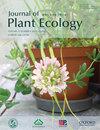气候因子调节着荒漠土壤中丰富和稀少微生物群落的聚集过程
IF 3.9
2区 环境科学与生态学
Q2 ECOLOGY
引用次数: 0
摘要
摘要土壤微生物包括许多稀有类群和少数丰富类群,它们对生态系统的功能和服务有不同的贡献。采用高通量测序技术对土壤样品的物种组成进行DNA测序分析。将土壤微生物分为丰富的类群和稀少的类群,揭示其组成。采用相关分析和随机森林方法进一步分析了环境因子对群落的影响。最后,利用基于零模型的β -最近类群指数(βNTI)揭示了土壤微生物群落组装的机制。研究结果表明,在荒漠土壤中,稀有细菌的群落聚集几乎完全由确定性的同质选择过程支配。相比之下,随机过程对大量细菌的影响更为明显。然而,无论是丰富的真菌还是稀有的真菌都表现出相似的群落组装模式,即确定性过程和随机过程几乎共同决定了真菌群落的组装过程。我们观察到,随着平均年降水量(MAP)和平均年气温(MAT)的增加,群落组装从随机过程转变为确定性过程。相反,对于稀有真菌,随着MAT的增加,有从确定性过程向随机过程转变的倾向。总之,我们的研究结果提供了令人信服的证据,表明MAT和MAP调节了沙漠土壤中丰富和稀有微生物群落的群落组装过程。这些发现为进一步研究土壤微生物群落结构和生态功能奠定了理论基础。本文章由计算机程序翻译,如有差异,请以英文原文为准。
Climatic factors regulate the assembly processes of abundant and rare microbial communities in desert soil
Abstract Soil microorganisms including many rare taxa and few abundant taxa, have different contributions to the ecosystem functions and services. High throughput sequencing technology was used to analyze the species composition of soil samples by DNA sequencing. Soil microorganisms were divided into abundant taxa and rare taxa to reveal their composition. Correlation analysis and random forest method were used to further analyze the influence of environmental factors on the community. Finally, the beta nearest taxon index (βNTI) based on the null model was used to reveal the mechanism of soil microbial community assembly. The findings indicate that in desert soils, the community assembly of rare bacteria is almost entirely dominated by a homogeneous selection of deterministic processes. For comparison, stochastic processes had more pronounced effects on the abundant bacteria. However, both abundant and rare fungi exhibited similar patterns of community assembly, that is, deterministic and stochastic processes almost jointly determined the assembly processes of fungal communities. We observed that community assembly shifted from stochastic to deterministic processes with increasing mean annual precipitation (MAP) and mean annual temperature (MAT) for abundant bacteria. Conversely, for rare fungi, there was an inclination towards a shift from deterministic to stochastic processes with rising MAT. In conclusion, our findings provide compelling evidence that MAT and MAP regulate the community assembly process of abundant and rare microbial communities in desert soil. These findings establish a theoretical foundation for future investigations into the community structure and ecological functions of soil microorganisms.
求助全文
通过发布文献求助,成功后即可免费获取论文全文。
去求助
来源期刊

Journal of Plant Ecology
生物-植物科学
CiteScore
4.60
自引率
18.50%
发文量
134
审稿时长
3 months
期刊介绍:
Journal of Plant Ecology (JPE) serves as an important medium for ecologists to present research findings and discuss challenging issues in the broad field of plants and their interactions with biotic and abiotic environment. The JPE will cover all aspects of plant ecology, including plant ecophysiology, population ecology, community ecology, ecosystem ecology and landscape ecology as well as conservation ecology, evolutionary ecology, and theoretical ecology.
 求助内容:
求助内容: 应助结果提醒方式:
应助结果提醒方式:


